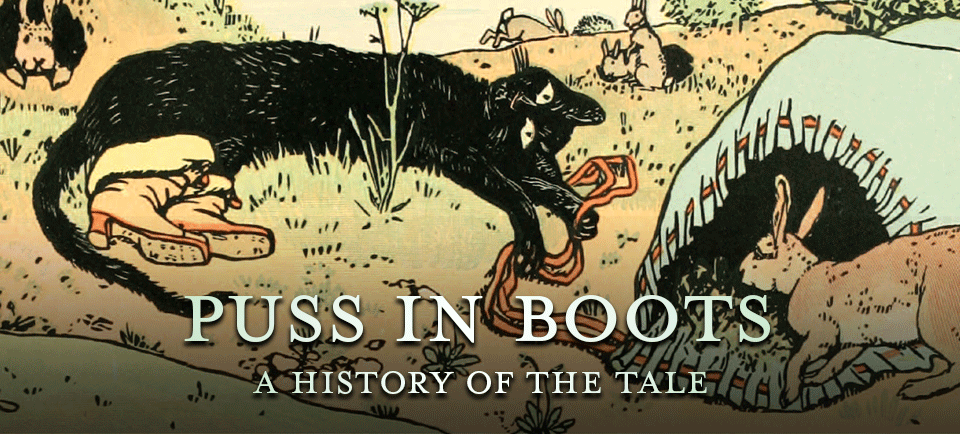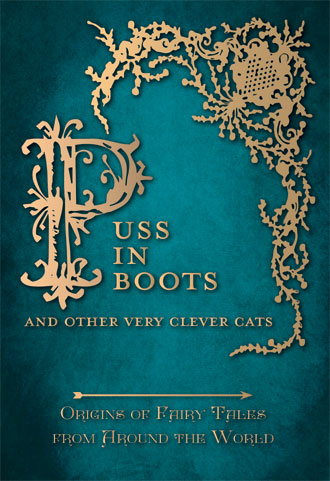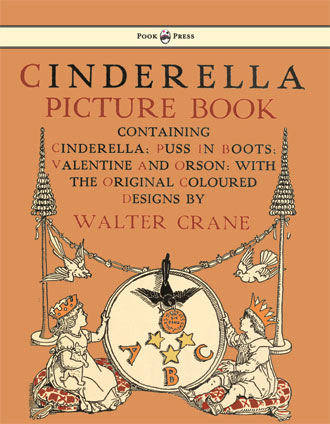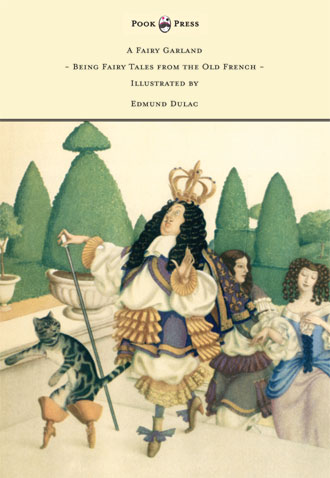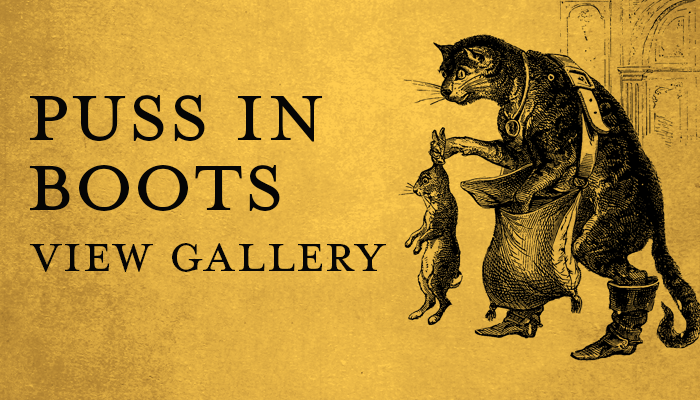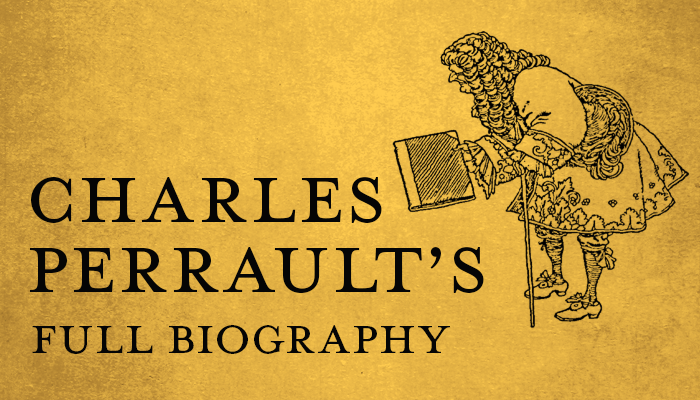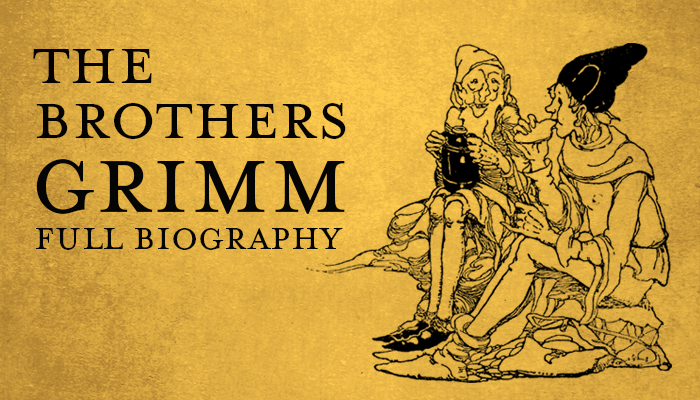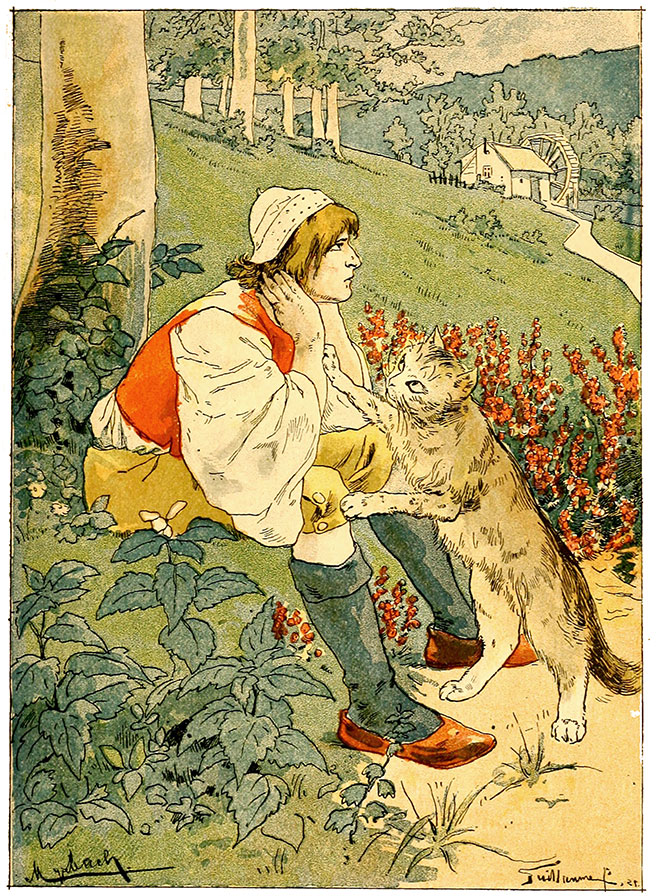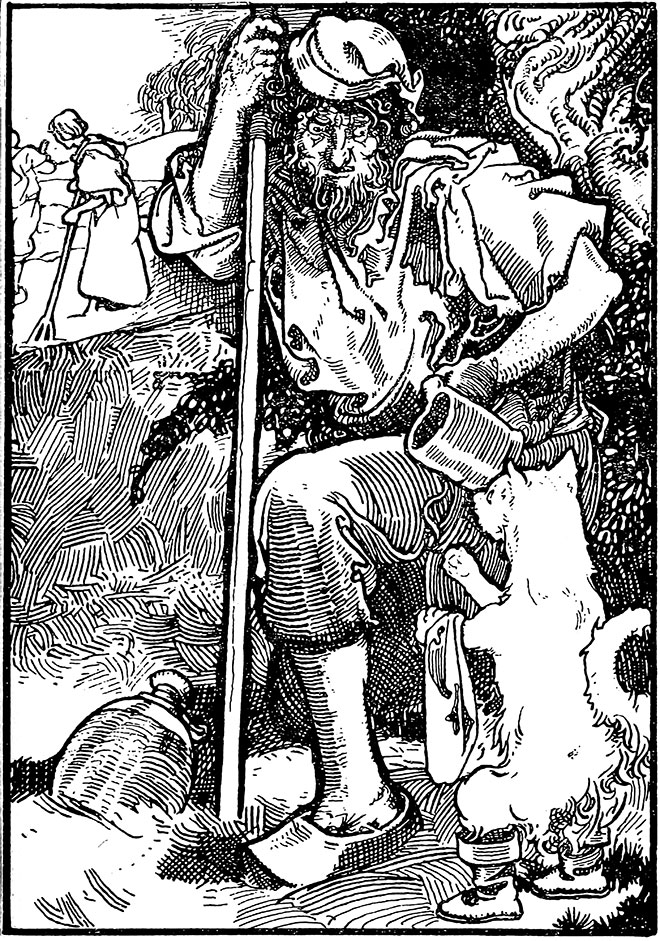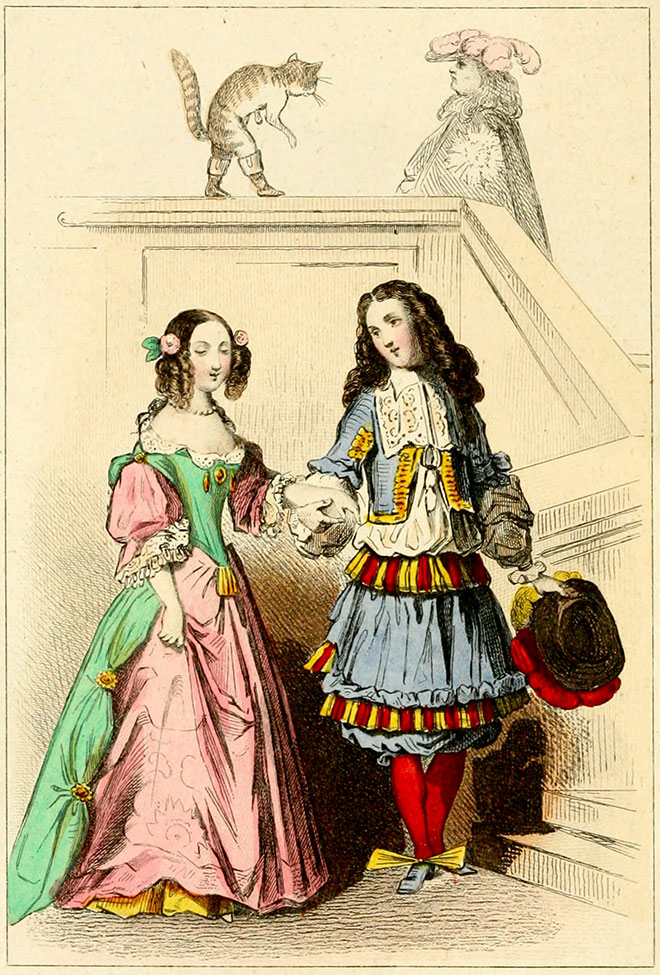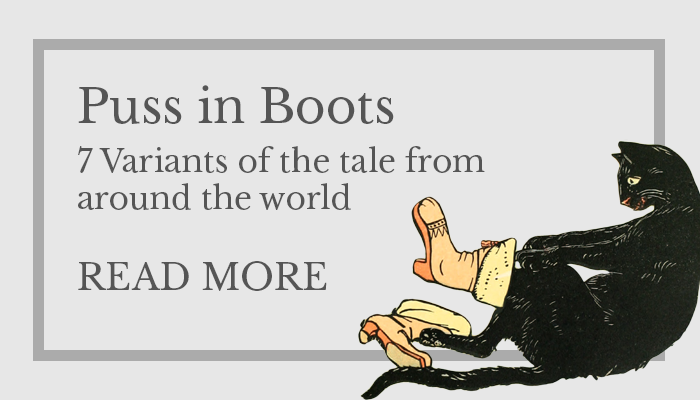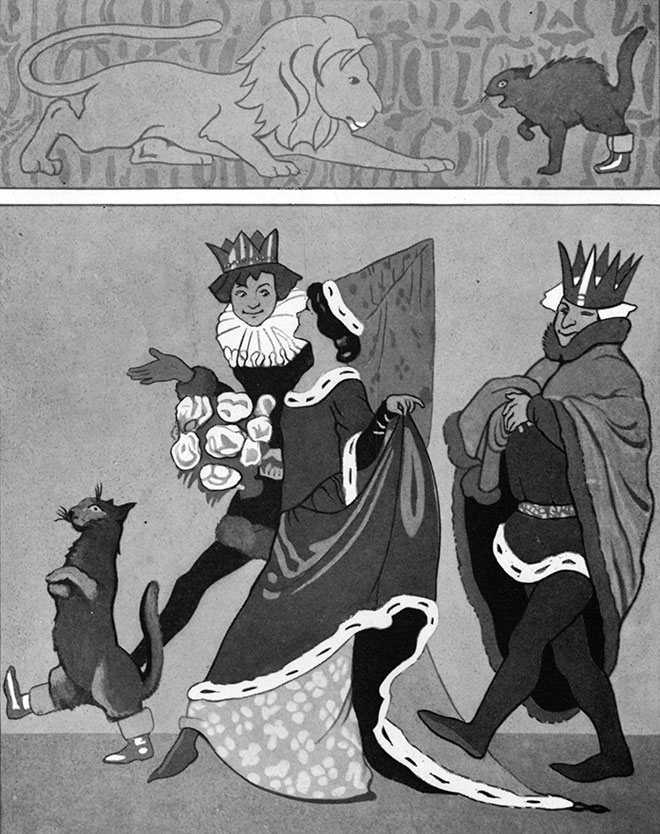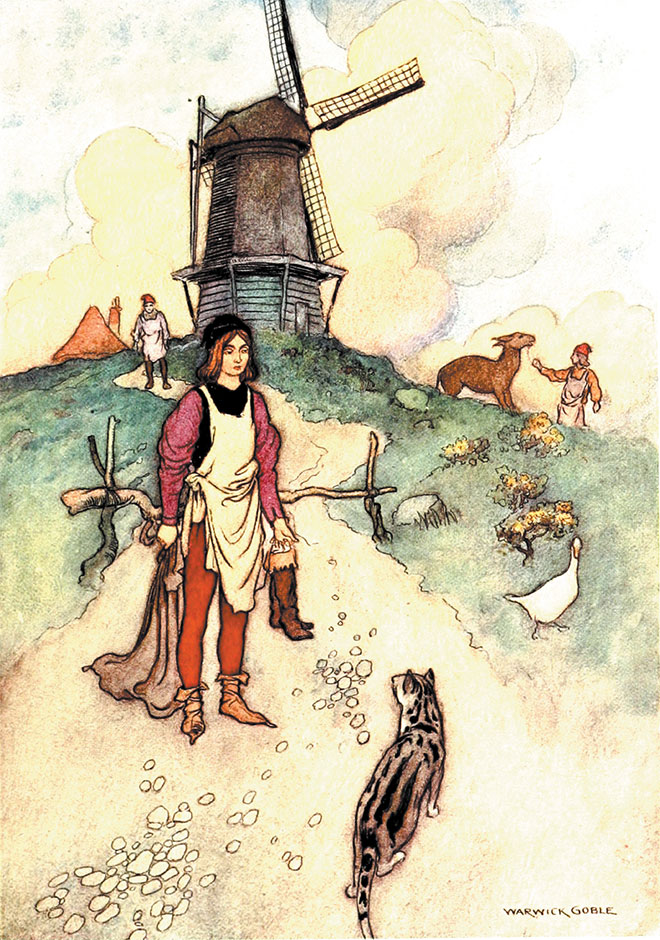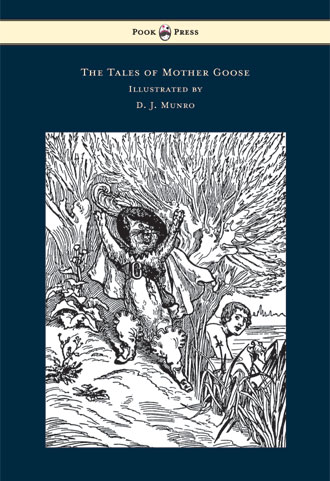The History of Puss in Boots
The Puss in Boots fairy tale is a story known all over the world; re-adapted, appropriated and changed by many cultures.
The Puss in Boots fairy tale is a story known all over the world; re-adapted, appropriated and changed by many cultures. The plot centres around a cat (or in some cases a jackal, a gazelle, or even a fairy-in-disguise) that uses trickery and deceit to gain power, wealth, and the hand of a princess for his penniless and low-born master. It is unusual in folkloric storytelling, in that there is no obvious moral – with riches gained through double-dealing, rightful owners deprived of their lands, and innocent princesses given falsely in marriage.
The story first appeared in print with Giovanni Francesco Straparola’s The Facetious Nights (published between 1550 and 1553). This two-volume collection featured seventy-five stories in total, and is highly significant as the first European storybook to contain fairy-tales. Its author, Giovanni Francesco, was a master story-teller and his own life is shrouded in mystery. While his name is likely to have been ‘Giovanni Francesco’, his surname – that of ‘Straparola’ is thought to have been an invention. It is not typical of a family name of that time and place (which usually took official employment or location as their basis), and the literal meaning of it, ‘babbler’, seems a likely nickname for a writer. Nonetheless, his ‘babbling’ tales include many of the first known examples of some of our best loved fairy tales – Puss in Boots being the most famous example.
The Puss in Boots story first appeared in Straparola’s ‘The Facetious Nights’
With the title of Costantino Fortunato, (meaning ‘Lucky Costantino’), Giovanni Francesco’s tale largely ‘fixed’ the narrative structure for all who followed. The exceedingly clever cat provides the youngest of three brothers with sustenance, and through a series of ‘upward trades’ with the King (including tricking him into clothing the boy in princely attire), eventually gains for his master a fine castle and the Princesses’ hand in marriage. This account is likely to have inspired Charles Perrault, the masterful French storyteller, in his famed Histoires ou Contes du Temps Passé (1697). Perrault’s story, Le Maître Chat, ou Le Chat Botté (Puss in Boots), is particularly interesting as it is the first story to feature the cat’s handsome boots, and also the first variant to mention an ogre. Giovanni Francesco’s tale merely had the young man assuming ownership of a dead knight’s castle – whereas Perrault has the cat cleverly kill the shape-shifting ogre.
SELECTED BOOKS
Perrault’s two additions are highly intriguing. That the cat asks for boots is a sign of his other-worldly nature. As the reader no doubt assumes, this is no regular cat (talking or otherwise!), but the boots are a symbol of his high status as a creature of fate – it would be unfitting for such an ‘animal helper’ to be bare footed. Secondly, Perrault’s inclusion of the ogre in the castle is a nod to the tale’s ancient origins. As Jacob Grimm once asserted, ‘ogres’ came from the Roman and Medieval belief in Orcus; the god of the underworld and punisher of broken oaths, who was lowered to the status of a shape-changing monster. This tradition was generally held in rural areas, allowing for the myth’s survival long after the more prevalent gods had ceased to be worshiped. The French word ogre (which actually first appeared in Perrault’s fairy tales) came from the variant forms of this word, ogro or orco and further signifies to the knowledgeable reader, the immense power of the animal helper.
The ‘master cat’ is after-all able to kill the ogre in Perrault’s tale, by persuading it to change into a mouse, whereby he is swiftly gobbled up. This element is replicated in the Scandianavian variant (Lord Peter) in which a troll is encouraged to shape-shift (this time making himself as small as a mouse), at which point he too is eaten by the cat. As Perrault tells it, there is no real lesson to be learned from the Puss in Boots narrative; the cat is a perfectly unscrupulous adventurer who purely for the fun of the thing, dubs the miller’s son marquis, makes a royal marriage for him by a series of amusing frauds, and finally enriches him with the riches and castle of a murdered ogre.
Although he does offer two ‘morals’ at the end; firstly that with knowledge and hard work, one can rise in society, and secondly that good looks and fine clothes are useful in winning love – both of these goals are achieved through legerdemain. It is thus doubtful that an overtly moralising tone (so common to many other fairy tales) was ever intended for this narrative.
Perrault’s story, ‘Le Chat Botté’ is the first story to feature the cat’s handsome boots
The Brothers Grimm attempted to give their Puss in Boots variant a moral too. Published in Kinder und Hausmärchen in 1812, The Poor Miller’s Boy and the Cat depicts a ‘stupid’ young man named Hans, who is found by the cat. At the end of this story, which as usual turns out rather well for the youngest son, the Grimms state:
“Let no one ever say that anyone who is silly can never become a person of importance.”
The ambiguity inherent in these tales so shocked some readers, that George Cruikshank (the renowned illustrator of Charles Dickens’ stories) declared the story to be:
“A succession of successful falsehoods — a clever lesson in lying! — A system of imposture rewarded with the greatest worldly advantages!”
***
There are some other examples of fairy tales without morals however; the tale of Rumpelstiltskin also features trickery and laziness rewarded, with a young girl similarly falsely wed to a King, whilst the legend of Blue Beard (although it often ends badly for the marauding nobleman) holds a somewhat dubious warning against female inquisitiveness. Many cultures have tales in which someone, by a series of lucky accidents and exchanges, goes on making good bargains and rising from poverty to wealth. In France this is the tale of Jean Gogué, and the Brothers Grimms’ The Golden Goose bears an analogous storyline. A related story also appears in Zulu mythology; The Adventures of Uhlakanyana. In most of these, the hero possesses some trifling article which is damaged and people give him something better in exchange, until like in Jean Gogué for example, he marries the King’s daughter.
The Brothers Grimm ‘Puss in Boots’ variant ‘The Poor Miller’s Boy and the Cat’ was published in 1812
There are three stories where moralising elements are evidenced though – the British, the Indian and the Swahili variants. In the Indian narrative, The Match-Making Jackal, the story ends with the Prince and Princess making a splendid palace and hospitals for sick and infirm animals. This practice is closely related to the Hindu doctrine of ‘ahimsa’, which demonstrates the importance of looking after revered (and sacred) beasts.
The Swhahili Story of a Gazelle likewise demonstrates the necessity of showing gratefulness to such animal helpers. When the young man neglects the gazelle as it lies dying – he is returned penniless to the dust-heap from whence he came. The gazelle is universally loved in this narrative, speaking to their representation in African culture as kind and gentle creatures. In the version collected by Joseph Jacobs; The Earl of Cattenborough, the young man’s ungrateful nature is likewise discovered when he threatens to throw the dying cat out onto the dunghill. He soon repents however, and the standard happy ending is thus enjoyed. Perhaps here is a lesson; that given the chance a man will be less grateful than a beast.
The transmogrification from a cat to a jackal (in The Match-Making Jackal) is also particularly telling, as in the European tradition, Jackal’s are often depicted (akin to foxes) as clever and magical creatures. The jackal is also mentioned fourteen times in the Bible, and is frequently used as a literary device to illustrate desolation and abandonment (perhaps suggesting why he is so happy to help and thus befriend the young man). In Pakistani and Indian literature however, jackals are often unfavourably represented – with a famous saying stating that ‘One day’s life of the lion is better than one hundred years life of the jackal.’ The fact that the animal helper is presented in the Indian version as a jackal, speaks to the rise in cultural transfer between the two continents, which began in earnest with the arrival of the European traders in 1498.
As a testament to this story’s ability to inspire and entertain generations of readers, Puss in Boots continues to influence popular culture internationally, lending plot elements, allusions and tropes to a wide variety of artistic mediums. The tale has been translated into almost every language across the globe, and very excitingly, is continuing to evolve in the present day.
MORE PUSS IN BOOTS
SELECTED BOOKS

